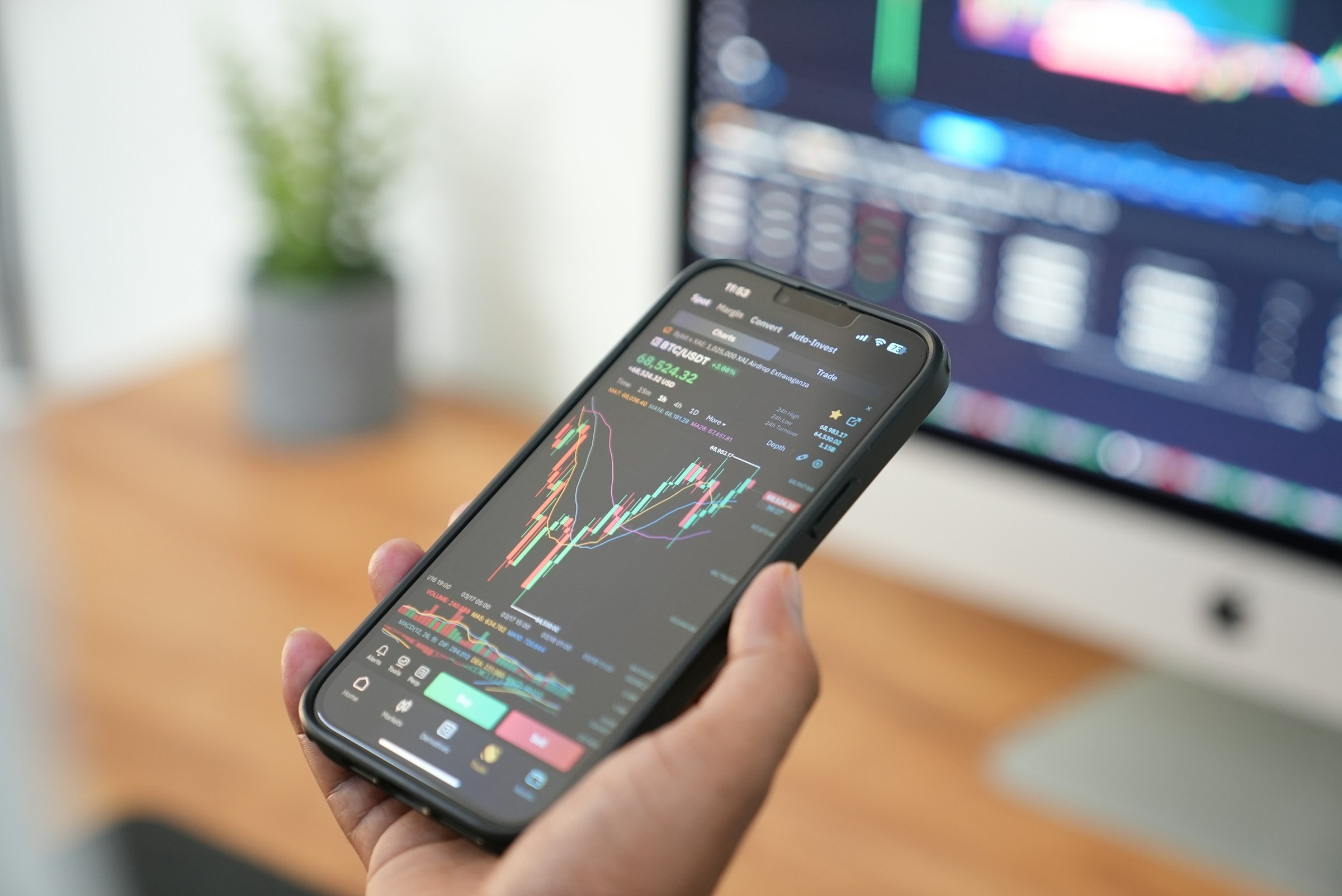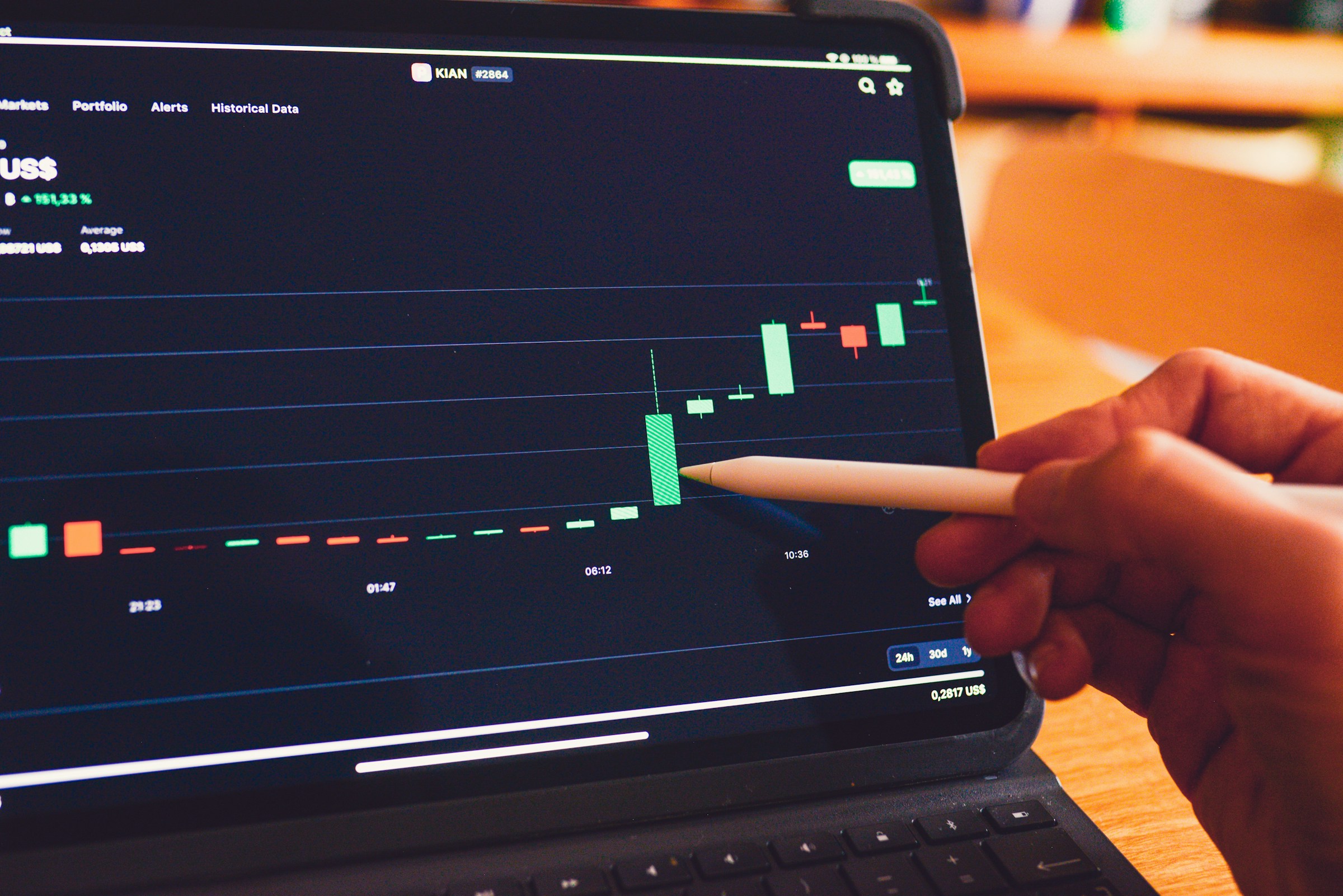Discover how AI currency trading works, its benefits, and why it’s reshaping the forex market for traders of all levels.
.jpg)
Consider being able to buy and sell currencies without the emotional ups and downs of trading. What if you could develop a strategy based on logic and reason, rather than fear and greed? That is precisely what AI-driven currency trading offers.
Trading using AI, or artificial intelligence, takes a lot of the pressure off currency trading by allowing algorithms to make decisions for you. This guide will introduce you to AI currency trading and help you feel prepared to explore and utilize AI-powered tools for trading currencies.
One great way to get started with trading using AI is to use a trading bot. Trading Bot Experts offers reviews of the best trading bots to help you understand what AI currency trading is and how to get started.
.jpg)
AI Currency Trading involves using artificial intelligence technologies, such as machine learning algorithms, predictive analytics, and natural language processing, to analyze currency markets and execute trades automatically or with minimal human intervention. These AI systems examine vast amounts of historical and real-time market data to identify patterns, forecast price movements, and generate trading signals, often faster and more accurately than a human trader could.
Rather than relying on gut feelings, AI traders use data-driven models that continuously learn from new information. This allows them to adapt to changing market conditions and optimize trading strategies such as trend following, mean reversion, breakout trading, arbitrage, and even market sentiment analysis based on news and social media.
One of the key advantages of AI currency trading is its ability to operate 24/7 without emotional bias, ensuring that trading decisions are based purely on data analysis. AI bots can scan multiple currency pairs simultaneously, execute trades at high speed, and help traders manage risks more effectively. However, while AI enhances efficiency and supports decision-making, human oversight remains crucial for monitoring system performance and mitigating unexpected risks or malfunctions.
If you are exploring automated trading solutions, Trading Bot Experts offers personalized recommendations for trading bots tailored to your budget and specific trading needs. Our tailored approach helps traders find the right AI-powered tools to enhance strategy execution.
Not sure which trading bot is right for you? Take our free Trading Bot Match Quiz and get a personalized recommendation based on your budget, goals, and risk tolerance — in under 60 seconds. We’ll also send you a free e-book with honest reviews, performance stats, and red flags to avoid in the trading bot world. Whether you're seeking hands-off profits or a high-performance AI tool, this guide helps you make the most informed choice. Click here to take the quiz and get your free report.

Artificial Intelligence (AI) tools transform currency trading by rapidly gathering and processing diverse market data sources, including economic indicators, news releases, and historical price patterns. Unlike traditional methods, AI can detect subtle correlations and emerging trends that might elude human analysts. By leveraging machine learning, these tools generate precise trading signals and forecast future market movements with enhanced accuracy.
AI-enabled trading robots automate trade execution based on pre-established rules, operating around the clock without human intervention. This continuous trading capability ensures that opportunities are not missed even outside regular monitoring hours. By automating routine tasks, AI enables traders to focus on strategic decision-making and in-depth analysis, thereby optimizing time and cognitive resources.
Machine learning algorithms adapt to the ever-shifting Forex market by training on extensive historical data and continuously updating with fresh market inputs. This learning process enables AI systems to refine trading strategies dynamically, improving accuracy and responsiveness to market volatility. The ability to self-improve in real time is invaluable in a market characterized by rapid and unpredictable changes.
AI excels in risk management by analyzing multiple risk indicators, including volatility, liquidity, and overall market sentiment, to inform informed decisions. It advises on optimal position sizing and risk tolerance, helping safeguard traders against heavy losses. AI mitigates emotional bias by replacing instinctive, sometimes erratic human decision-making with data-driven recommendations, thereby fostering disciplined trading behavior.
Advanced AI sentiment analysis tools scan and interpret vast amounts of unstructured text data from news media and social platforms to gauge market sentiment. This capability enables traders to understand the prevailing market mood, whether optimistic or pessimistic, and make informed decisions accordingly. By providing objective sentiment insights, AI reduces bias introduced by emotional reactions and enhances the quality of trade decisions.

Artificial Intelligence offers profound capabilities in parsing historical market data. By systematically analyzing extensive historical data, AI models provide traders with enhanced insights into market trends, thereby improving the basis for sound trading decisions. This deeper understanding helps traders anticipate potential currency movements more accurately.
AI algorithms excel at processing massive volumes of real-time data efficiently. This capability is vital in Forex trading, where timely analysis of continuously changing market inputs determines trading success. By leveraging AI, traders gain the ability to interpret market signals as they emerge, enabling them to make precise daily Forex market assessments and forecasts.
One of AI’s transformative impacts in currency trading is the automation of buy and sell orders. AI-driven systems can execute trades autonomously based on preset conditions, eliminating the need for human intervention. This automation not only accelerates response times to market fluctuations but also enhances operational efficiency, allowing traders to capitalize on opportunities instantly.
Machine learning-driven software platforms conduct comprehensive data analyses that surpass the capabilities of traditional manual methods. These intelligent systems identify complex patterns and subtle market signals faster and with greater accuracy. Consequently, traders relying on AI enjoy more precise timing and better-informed entry and exit strategies.
AI technology reduces the risk profile of currency trading by minimizing human errors and enforcing consistency in strategy execution. Through continuous learning and adaptation, AI systems apply systematic risk management protocols, such as optimized stop-loss placement and position sizing, helping to protect traders from sudden adverse market moves and promoting safer trading environments.

The effectiveness of AI in currency trading heavily depends on the quality and completeness of market data. Forex market data can often be noisy, fragmented, or incomplete due to the decentralized and fast-moving nature of these markets. Since AI models analyze both historical and real-time data to predict trends, any deficiencies or inaccuracies in this data can result in misleading insights and poor trading decisions. Therefore, subpar data quality significantly undermines the reliability of AI-driven market analysis.
Developing AI models that perform consistently in real-world forex trading is a challenging task. A common issue is overfitting, where an AI algorithm performs well on training datasets but fails to adapt to new, unseen market conditions. Market dynamics can change rapidly, influenced by geopolitical events, economic shifts, or sudden spikes in volatility, which AI trained on past data might not accurately predict. This limits the robustness and generalizability of trading models.
The currency markets are highly regulated, with rules that vary widely across different jurisdictions. Integrating AI into trading processes requires strict adherence to these regulatory frameworks. However, AI presents unique challenges for oversight because its decision-making processes, often complex and opaque ("black box" models), can be complex to audit and control. Moreover, evolving regulations around AI use in trading impose uncertainties that can slow adoption and complicate compliance efforts.
Implementing AI-based trading strategies demands significant computational potential and specialized knowledge. High-performance infrastructure is essential for processing large datasets and running complex algorithms efficiently. Additionally, the development, maintenance, and continuous refinement of AI models require skilled professionals, which can be prohibitively expensive, especially for smaller traders or firms. Such resource requirements limit the accessibility and scalability of AI trading solutions.
While AI can process vast amounts of data, including news and social media, it still struggles to fully grasp human market sentiments, sudden rumors, or panic selling that influence price movements. The unpredictable nature of geopolitical crises, natural disasters, or other unforeseen shocks presents a fundamental limitation for AI models relying on historical data, resulting in inaccurate predictions during such events.
AI trading systems are also susceptible to technical failures, including software bugs, server outages, and connectivity issues. Such disruptions can lead to missed opportunities, erroneous trades, or significant financial losses. Historical incidents in algorithmic trading underscore the potential severity of these risks, highlighting the need for robust system monitoring and fail-safes.
Despite AI’s capabilities, human judgment remains an indispensable component in currency trading. Overreliance on AI can render traders passive and uninformed, thereby increasing their vulnerability to model weaknesses or sudden shifts in market regimes. Effective trading strategies typically combine AI’s data-handling strengths with human discretion to adapt to nuanced market contexts.
Which trading bot is right for you? Take our free Trading Bot Match Quiz and get a personalized recommendation based on your budget, goals, and risk tolerance — in under 60 seconds. We’ll also send you a free e-book with honest reviews, performance stats, and red flags to avoid in the trading bot world. Whether you're seeking hands-off profits or a high-performance AI tool, this guide helps you make the most informed choice. Click here to take the quiz and get your free report.